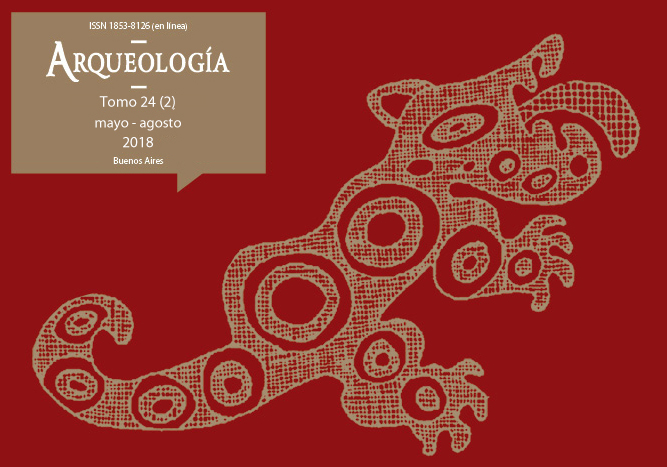Contribution to the chronology of late Chenques from Lake Salitroso (Santa Cruz, Argentina)
Keywords:
Mortuary record, Chronology, Demography, Late Holocene, Patagonia
Abstract
In this article, two new radiocarbon dates from a late chenque (ca. 800-350 AP) at Lake Salitroso (SAC) are presented. These dates have implications for current discussions concerning mortuary practices and demography in the region. The case discussed is chenque SAC 1-2, a multiple individual, primary burial, containing one female adult and 5 infants. Two prior radiocarbon dates date this burial to ca. 450 BP. The two new radiocarbon dates were from two sub-adults placed next to each other at the base of the burial. Their positions suggest contemporaneous inhumation. Yet, while the date from one of the individuals (487 ± 23 BP) was within the same chronological range of ca. 400-500 BP, the other individual yielded a date –709 ± 30 AP– set approximately 200 years earlier. This chronological discrepancy raises new questions concerning mortuary practices and the way in which burial structures were reused in the region. It also has implications for existing hypotheses regarding the reoccurrence of mortality events that affected coevally sub-adults of different ages. This has been posed as a possible explanation for the abnormal pattern observed in the mortality profile of the late chenques. Our case-study warns us on the need to further refine the chronology of human burials from Lake Salitroso.Downloads
Download data is not yet available.
How to Cite
García Guraieb, S., Goñi, R. A., & Guichón Fernández, R. (1). Contribution to the chronology of late Chenques from Lake Salitroso (Santa Cruz, Argentina). Arqueología, 24(2), 271-280. https://doi.org/10.34096/arqueologia.t24.n2.5010
Section
Reports
Authors who publish in this journal agree to the following conditions:
- Authors retain copyright and yield to the journal right of first publication with the work registered with attribution license Creative Commons, which allows third parties to use the published always mentioning the authorship of the work and first publication in this magazine.
- Authors can make other independent and additional contractual arrangements for the non-exclusive distribution of the version of the article published in this issue (p. Eg., Inclusion in an institutional repository or publish it in a book), provided that clearly indicate that the work was published for the first time in this magazine.
- It allows and encourages the author / s to publish their work online (eg institutional or personal pages) before and during the process of revision and publication, as it can lead to productive exchanges and greater and more rapid dissemination of work published (See The Effect of Open Access).





(1)13.png)






1.jpg)
1.jpg)


13.png)
1.png)


(1)1.png)









